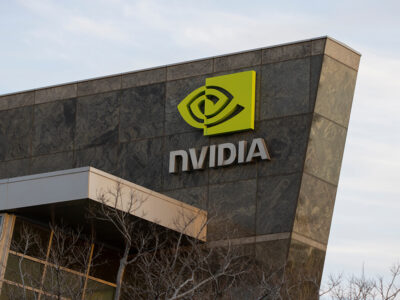Nvidia Corp unveiled a new computing platform called Drive Thor, which promises to have the ability to power truly 100 percent autonomous cars. The new processor would centralise autonomous and assisted driving as well as other digital functions including in-car entertainment.
Drive Thor achieves up to 2,000 teraflops of performance and unifies intelligent functions, like automated and assisted driving, parking, driver and occupant monitoring, digital instrument cluster, in-vehicle infotainment (IVI) and rear-seat entertainment into a single architecture for greater efficiency and lower overall system cost.
Thor will have 77 billion transistors and it will let automakers replace heavier, more expensive and more power-consuming smaller chips. In addition to using Hopper GPUs (Graphic Processing Unit), Drive Thor borrows CPU (Central Processing Unit) cores from Nvidia’s 2023 Grace processor for conventional computing tasks. It also draws technology from its newest GPU technology for gaming and design.
Drive Thor will be able to run three operating systems simultaneously – Linux, QNX, and Android – for different parts of the car computing environment. Partitioning technology ensures the less important work, like infotainment, doesn’t interrupt the crucial safety-related work, Nvidia said. Thor will also be used for robots and medical equipment.
“Advances in accelerated computing and AI are moving at lightspeed,” said Jensen Huang, founder and CEO of Nvidia. “Drive Thor is the superhero of centralised compute, with lightning-fast performance to deliver continuously upgradable, safe and secure software-defined supercomputers on wheels.”
Drive Thor supports multi-domain computing, isolating functions for automated driving and IVI. Typically, dozens of electric control units are distributed throughout a vehicle to power individual functions. With Drive Thor, manufacturers can efficiently consolidate many functions on a single system-on-a-chip (SoC), which eases supply constraints and simplifies vehicle-design development, resulting in significantly lower cost, less weight and fewer cables.

Danny Shapiro, head of Nvidia’s automotive business, said: “You can imagine tremendous savings in terms of cost, in terms of reduced cabling, in terms of reduced weight, in terms of reduced energy consumption overall.”
An Nvidia statement said Drive Thor is the first AV platform to incorporate an inference transformer engine, a new component of the Tensor Cores within NVIDIA GPUs. “With this engine, Drive Thor can accelerate inference performance of transformer deep neural networks by up to 9x, which is paramount for supporting the massive and complex AI workloads associated with self-driving,” it added.
The new superchip also uses the latest NVLink-C2C chip interconnect technology, while running multiple operating systems. The advantage of the NVLink-C2C is its ability to share, schedule and distribute work across the link with minimal overhead. This equips automakers with the compute headroom and flexibility to build software-defined vehicles that are continuously upgradeable through secure, over-the-air software updates. Tesla has had a big technological lead in that technology for years.
The first customer Nvidia announced for Drive Thor is China’s Geely-owned ZEEKR, which announced it will integrate Drive Thor on its centralised vehicle computer for its next-generation intelligent electric vehicles, starting production in early 2025.
Founded in 1993, Nvidia is a pioneer in accelerated computing. It invented the GPU in 1999, which sparked the growth of the PC gaming market, redefined computer graphics and ignited the era of modern AI.








